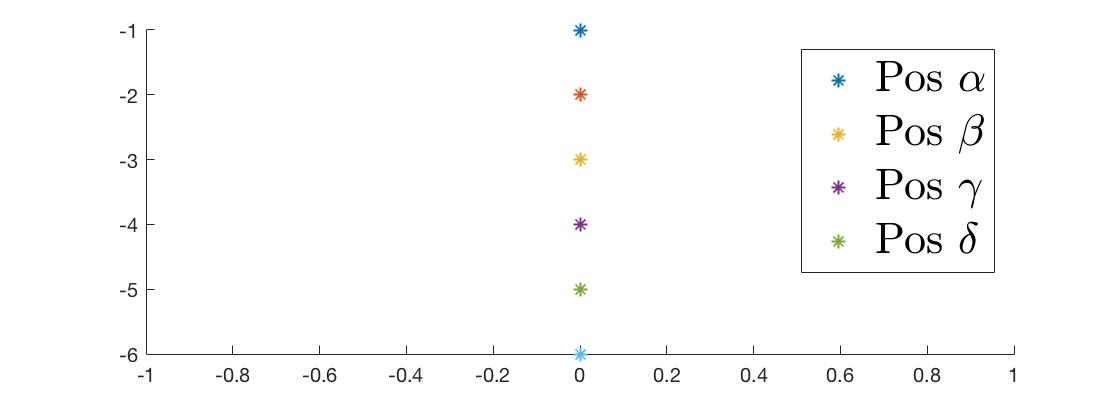I want to extend on Daniel's answer and explain some details.
What happens without {}
When legend entries are not specified in a cell array, only the properties Location and Orientation can be used in the direct call to legend. If other properties are present, they are interpreted as legend entries. That means Interpreter and TextSize and it's values would be legend entries. Adressing Adiel's comment on why it apparently works without {}: It not really does, it even throws a warning, indirectly because of the above mentioned reasons.
Sidenote: According to the syntax, the legend entries must be provided before the properities. Nevertheless it does work in any order but I do not recommend using this undocumented behaviour.
Selecting plots
You mention that you have to use the {} to select only the first four lines. This is not true because legend selects the first N plots by default. The problem was that the properties got interpreted as explained above. To select specific plots, you can use the plot handles to leave out the second plot:
legend([ph1,ph3,ph4,ph5], 'Pos1', 'Pos3', 'Pos4', 'Pos5');
Using other properties
To be able to directly use other properties in the call to legend, you can provide the legend entries as a cell array. This decouples the entries with the name-value-pairs of the properties. For example change the font size:
legend({'Pos1', 'Pos2', 'Pos3', 'Pos4'}, 'Fontsize', 22);
Another possibility is to use a handle for setting other properties without using a cell array:
l = legend('Pos1', 'Pos2', 'Pos3', 'Pos4');
set(l, 'Fontsize', 22); % using the set-function
l.FontSize = 22; % object oriented
latex-interpreter
If you set Interpreter to latex then all the contents of the legend entries need to be compilable by latex. That means \alpha cannot be used outside a math-environment. To add an inline-math expression in LaTeX you can enclose it with $-signs. So $\alpha$ works as mentioned in Daniel's answer. With the tex-interpreter, Matlab uses a subset of the TeX markup and automatically works for the supported special characters, so there would be no need for $...$ when you don't use the latex intrpreter.
Suggestions
- Don't forget the
$-signs.
- Adress the specific plots in the call to
legend.
- Use a cell array and set all the properties in the call to
legend directly.
- With
... you can split the long line in several ones.
For example like this:
legend([ph1,ph3,ph4,ph5], ...
{'Pos $\alpha$', 'Pos $\beta$', 'Pos $\gamma$', 'Pos $\delta$'}, ...
'Location', 'northeast', 'Interpreter', 'latex', 'FontSize', 22);
This is the complete code for the example:
figure; hold on;
ph1 = plot(0,-1,'*'); ph2 = plot(0,-2,'*');
ph3 = plot(0,-3,'*'); ph4 = plot(0,-4,'*');
ph5 = plot(0,-5,'*'); ph6 = plot(0,-6,'*');
legend([ph1,ph3,ph4,ph5], ...
{'Pos $\alpha$', 'Pos $\beta$', 'Pos $\gamma$', 'Pos $\delta$'}, ...
'Location', 'northeast', 'Interpreter', 'latex', 'FontSize', 22);
With this result:
![example]()


$is needed? Why without the{}it works? – Metsky